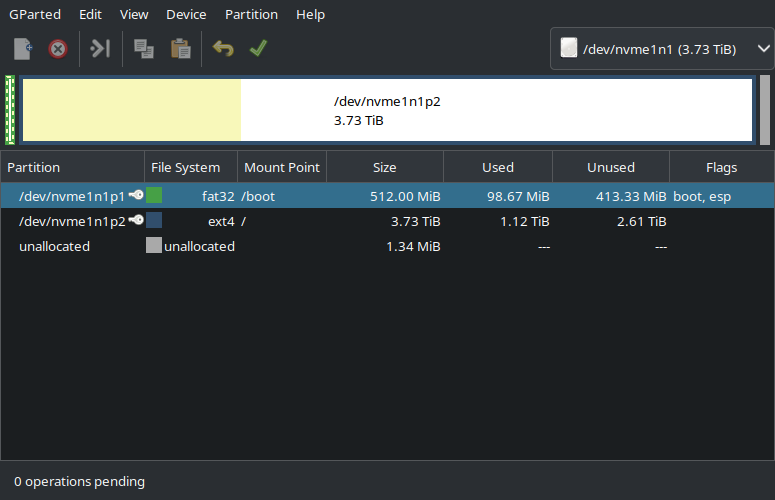How did you partition your disk before installing Linux? Do you regret how you set it up?
I’m looking for some real users experiences about this and I’m trying to find the best approach for my setup.
Thank you for sharing!
/boot/efi, /root
In 20 years of using Linux my partition scheme has always been to say yes to whatever the OS suggests.
It’s usually that way for a reason, is my thinking
I just use the automatic thingy on my distro so like:
- Esp: 2GB (Limine + btrfs snapshot booting)
- root: all the drive
Defaults are usually fine for most users. People who know they are going to distro hop or need to move data later should have a separate
/home, but that’s about it until you get into special purpose installs.I’ve been using Linux for over a quarter of a century. Initially I spent hours attempting to come up with the best partitioning scheme but these days I pick LVM and use the defaults.
If I run out of space, I add a drive (or grow the virtual one) and grow the filesystem into the extra space.
Sometimes I need temporary space and use sshfs to mount a directory from another machine.
In other words, today you have infinite options to adjust according to need, partition schemes are not nearly as important.
Even swap space can live as a file on a normal partition if required.
That said. If you have specific use cases, check what’s required. Specifically because different uses need different attributes, it pays to check.

Just used the default for one big partition. I used to do tedious partition configurations, but it always ended up biting me down the road more than helping. This drive is for the OS, games, and working files. I have a 16TB NAS that holds anything worth saving, so if I need to nuke the whole thing and do a reinstall, all I really end up doing is downloading a bunch of Steam games again.
This gives basically no headaches at all. I am running this schema on all my Linux devices. And swap is done using a swapfile instead of a partition. This way, you can easily increase it later on.
I just chose the automatic partition thingy ¯\_(ツ)_/¯
It blows my mind that we had multiple modern ways to setup volumes in Linux (LVM, ZFS, BTRFS) for decades, yet people keep using partitions like it’s 1990.
What would you recommend then?
For my desktop, I have two disks. One is root, one is home. They are single BTRFS filesystems with automated snapshots, compressions, and a few subvolumes. Works great.
For a laptop, similar but with only a single disk/partition and FDE. Also works well.
Two separate EFI boot Partitions if you dual boot. Its not worth letting Windows know about linux. Linux chainloads to Windows boot.
~500 MB for /boot and the rest is LUKS-encrypted btrfs
I tend to just take the defaults when I’m deploying. I wouldn’t get any benefit of having home or tmp on a separate partition, but it’s nice that it’s an option.
Partitioning is one of those obsolete Unixisms that is best left in the 90s. Only exception is dual booting, but even there partitioning isn’t really very important anymore
Depends on your usecase… for a single user laptop, maybe… for a multiuser device or a server… nah.
I prefer partitioning away the user data for all usecases as that will fill up one day, and I don’t want that to down the machine.
sudo rm -rf *
I just clicked all drives in the Anaconda installer.






